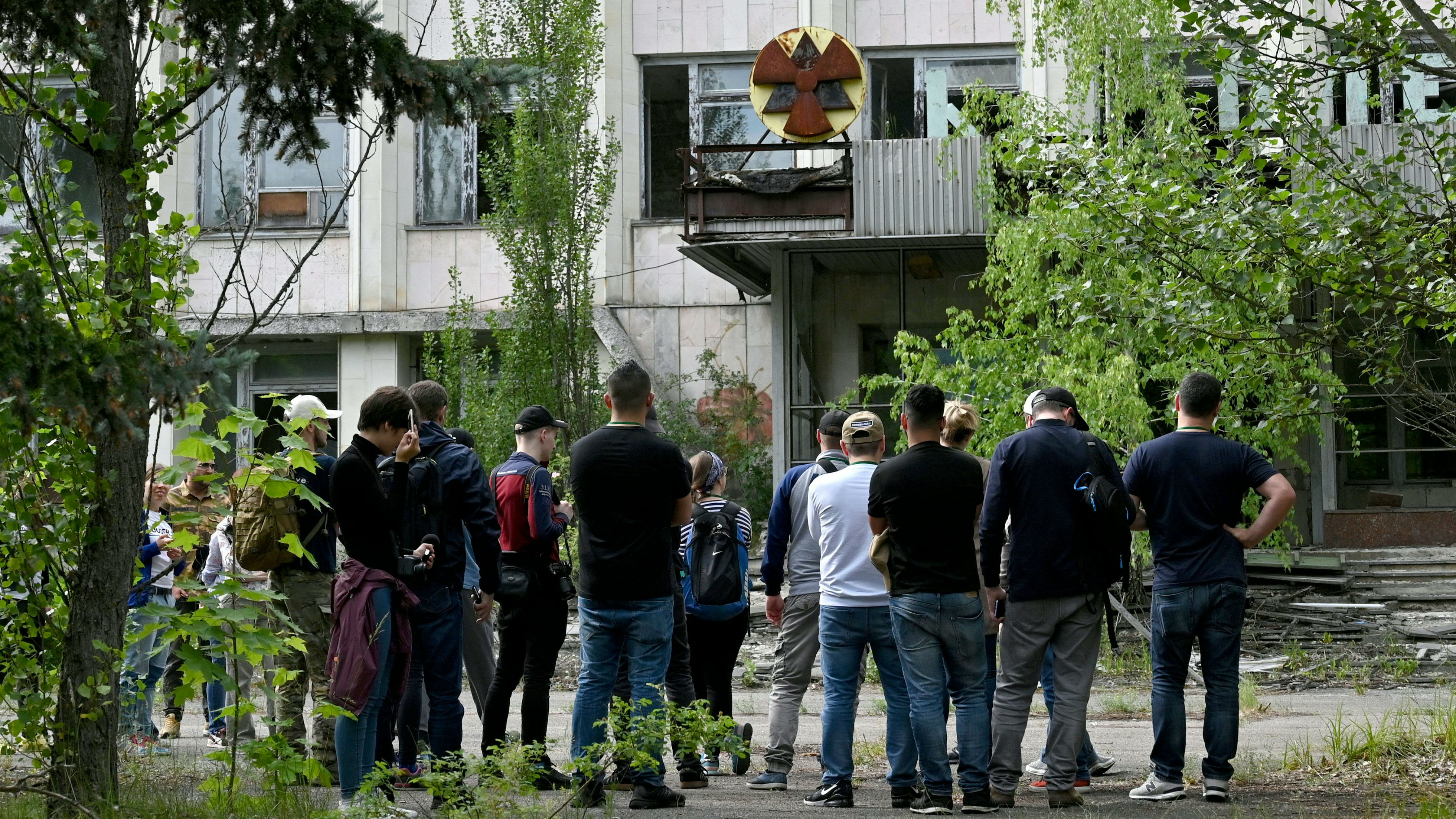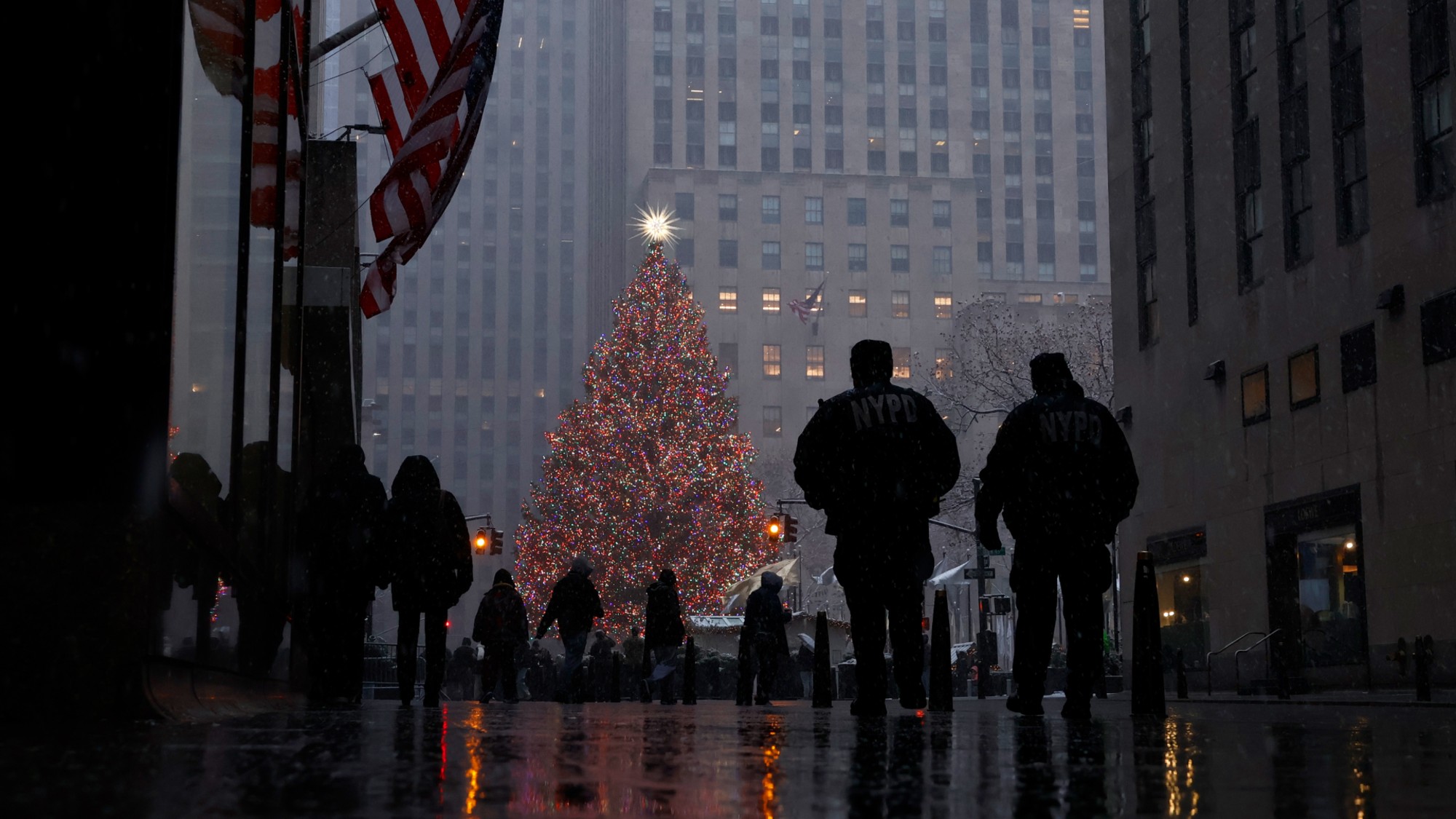Chernobyl and the rise of disaster selfies
Social media influencers under fire over photos taken at site of the nuclear tragedy

Tourists flocking to Chernobyl in the wake of the hit TV show of the same name have come under fire for taking “inappropriate” photos at the former nuclear power plant.
The premiere in May of HBO miniseries Chernobyl, about the deadliest nuclear disaster in human history, triggered a surge in tourism in Pripyat, the city in modern-day northern Ukraine that once housed the families of thousands of men and women who worked at the nearby nuclear site. The city was evacuated following the catastrophic meltdown, on 26 April 1986, and has remained unoccupied since.
The Guardian reports that the number of visitors to the nuclear disaster site last month was up by 40% year-on-year. But while many tourists are simply there to pay their respects, social media influencers are using renewed interest in the disaster to stage “irreverent or provocative” glamour shots for their Instagram accounts, says The Independent.
The Week
Escape your echo chamber. Get the facts behind the news, plus analysis from multiple perspectives.

Sign up for The Week's Free Newsletters
From our morning news briefing to a weekly Good News Newsletter, get the best of The Week delivered directly to your inbox.
From our morning news briefing to a weekly Good News Newsletter, get the best of The Week delivered directly to your inbox.
Such images include “one showing a woman with a hazmat suit undone to reveal a G-string”, with thousands more influencers posting similar photos under the hashtag #Chernobyl, adds The Guardian.
So-called “disaster selfies” have become ubiquitous in the ever-growing industry of disaster tourism, in which travellers head to the scene of terrible catastrophes from history.
In 2015, a large group of people were reported to have taken a selfie beside the wreckage of the Dharahara Tower, an iconic landmark that was reduced to rubble in the Nepal earthquake that killed almost 9,000 people. And last year, a selfie showing a group of smiling women posing in front of the wreckage from the Sunda Strait tsunami went viral on social media.
To some commentators, such images are an insult to the victims of the disasters, but others shrug off such behaviour as “just human nature”.
A free daily email with the biggest news stories of the day – and the best features from TheWeek.com
Why are they frowned upon?
Posing for selfies after horrendous events has “become a regular activity in our daily life”, says Rizqy Amelia Zein, assistant lecturer in social and personality psychology at the Universitas Airlangga in Indonesia. Indeed, it “almost as regular as people stopping by to see the aftermath of a traffic accident”, she writes in an article on The Conversation.
Zein suggests this behaviour is “a serious moral issue, because it is even worse than being a bystander”, and is a “symptom of social pathology, which is the loss of empathy”.
Yasmin Ibrahim, a media expert from Queen Mary University of London, has also written an article on the practice, which she views as a “disconcerting element of self-voyeurism in the post-disaster space”.
BuzzFeed News pinpoints 2014 as the year in which the growing trend really entered the public consciousness, after “one girl’s selfie at the Auschwitz concentration camp sparked outrage up and down the internet”.
“In the years since though, the lesson seems to have faded,” says the news site, which notes that only recently, Auschwitz “had to tweet a reminder to people to maybe not pose for cute pics on the railroads that carried hundreds of thousands of people to their deaths”.
Now, the issue has been pushed back into the spotlight by the growing trend for snapping pictures at Chernobyl.
Sergii Ivanchuk, director of SoloEast Travel, told The Washington Post this week that the practice was “disgusting and humiliating” to those who still work in the clean-up of Chernobyl, and to those who were never allowed to return to their homes at the site.
“The 20th century is full of dark events and suffering,” he said. “And just like Auschwitz or Hiroshima, Chernobyl is one of them.”
Are these images entirely negative?
Quartz thinks not. “Rubbernecking at disasters is an ancient sport,” the news site says, pointing out that people like to “document ourselves in these places for the same reason we document ourselves at weddings and graduations; they are moments we want to remember”.
The news site argues that the acceptability of the photos depends on matters of judgement and taste, and suggests that while “Israeli kids probably should not be taking pictures of themselves cuddling or leaping for joy in front of the gas chambers”, visitors to the scene of a disaster shouldn’t be expected to “devote every second of their attention to watching in respectful horror”.
“They make small-talk, call their relatives, eat a sandwich, do stretches, go to the bathroom, laugh at jokes,” Quartz adds. “And they take selfies.”
The Jakarta Post agrees that even if they can seem a little tasteless, selfies serve a practical function. “There are people who want to prove that they have arrived somewhere by logging in, checking in [on social media] and uploading some photos,” the paper says.
“The intention is actually normal; telling others that they have visited the location.”
-
 How climate change is affecting Christmas
How climate change is affecting ChristmasThe Explainer There may be a slim chance of future white Christmases
-
 The MAGA civil war takes center stage at the Turning Point USA conference
The MAGA civil war takes center stage at the Turning Point USA conferenceIN THE SPOTLIGHT ‘Americafest 2025’ was a who’s who of right-wing heavyweights eager to settle scores and lay claim to the future of MAGA
-
 The 8 best drama movies of 2025
The 8 best drama movies of 2025the week recommends Nuclear war, dictatorship and the summer of 2020 highlight the most important and memorable films of 2025
-
 How Bulgaria’s government fell amid mass protests
How Bulgaria’s government fell amid mass protestsThe Explainer The country’s prime minister resigned as part of the fallout
-
 Femicide: Italy’s newest crime
Femicide: Italy’s newest crimeThe Explainer Landmark law to criminalise murder of a woman as an ‘act of hatred’ or ‘subjugation’ but critics say Italy is still deeply patriarchal
-
 Brazil’s Bolsonaro behind bars after appeals run out
Brazil’s Bolsonaro behind bars after appeals run outSpeed Read He will serve 27 years in prison
-
 Americans traveling abroad face renewed criticism in the Trump era
Americans traveling abroad face renewed criticism in the Trump eraThe Explainer Some of Trump’s behavior has Americans being questioned
-
 Nigeria confused by Trump invasion threat
Nigeria confused by Trump invasion threatSpeed Read Trump has claimed the country is persecuting Christians
-
 Sanae Takaichi: Japan’s Iron Lady set to be the country’s first woman prime minister
Sanae Takaichi: Japan’s Iron Lady set to be the country’s first woman prime ministerIn the Spotlight Takaichi is a member of Japan’s conservative, nationalist Liberal Democratic Party
-
 Russia is ‘helping China’ prepare for an invasion of Taiwan
Russia is ‘helping China’ prepare for an invasion of TaiwanIn the Spotlight Russia is reportedly allowing China access to military training
-
 Interpol arrests hundreds in Africa-wide sextortion crackdown
Interpol arrests hundreds in Africa-wide sextortion crackdownIN THE SPOTLIGHT A series of stings disrupts major cybercrime operations as law enforcement estimates millions in losses from schemes designed to prey on lonely users